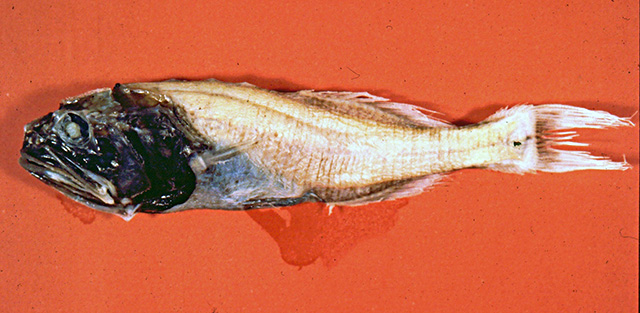| This species is caught by bottom trawls (epibenthic sledge and semi-balloon otter trawl). The type series were collected at a single station where the terrain at these abyssal depths (4490-4640 m) is characterized by a complex topography of undulations, some hundreds of meters in height and where substratum is firm with very low megafaunal biomass. Lack of a rich benthic invertebrate fauna contrasts with the abundance and diversity of the fish fauna sampled. Also, this species occurred among 22 other species of Synaphobranchidae (1 species), Alepocephalidae (2), Ipnopidae (4), Bathysauridae (1), Ophidiidae (8), Aphyonidae (3) and Macrouridae (3). In overall abundance, it ranked fourth, equal to the ophidioid, Porogadus sp. (10 specimens), but less abundant than the ipnopids, Bathypterois longipes Günther, 1878 (24) and Bathymicrops regis Hjort & Koefoed, 1912 (28) and the ophidioid, Bathyonus laticeps (Günther, 1878) (51). Specimens (3) were examined internally, all females (15.2, 15.5, 16.8 cm SL), with ovaries in varying stages of yolk formation. Some 3-4 generations of oocytes were present in the ovaries. The ovaries of the 15.5 cm SL specimen were the most mature, with the most advanced generation (estimated at some thousands of ova) being c. 1 mm in diameter and containing a large oil globule. Also, intestinal contents of this specimen were chitinous remains, while that of the holotype bore a heavy infestation of cestode worms only (Ref. 75592). |

